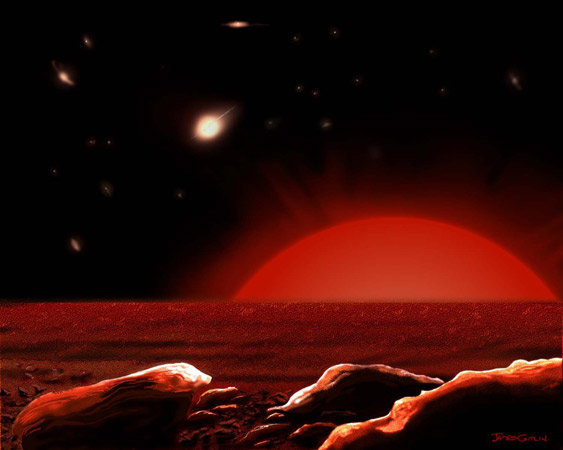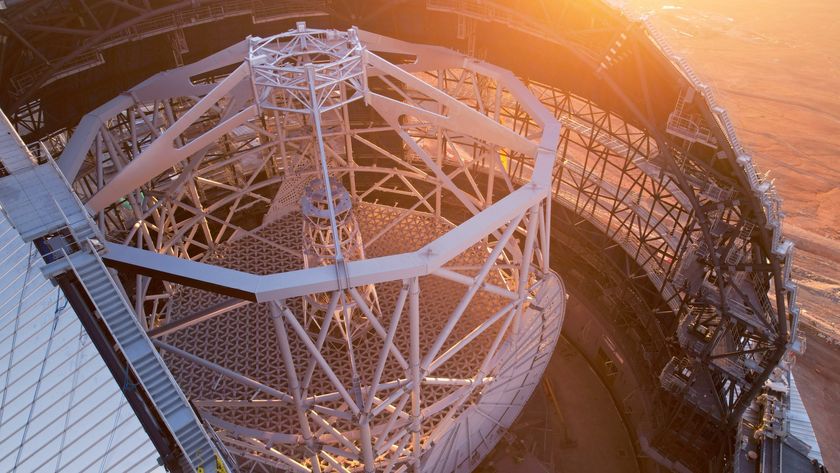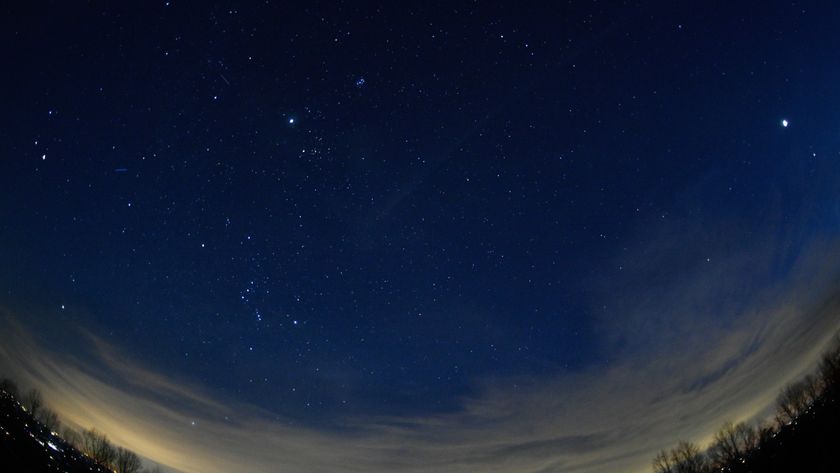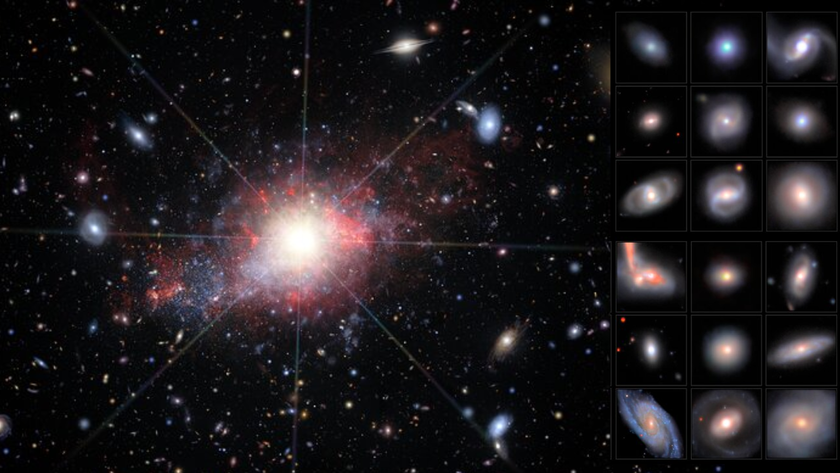Earth's Final Sunset Predicted

"Some say the world will end in fire, Some say inice," wrote the poet Robert Frost. Astronomers, it turns out, are in theformer camp.
A new calculation predicts that Earth will be swallowedup by the sun in 7.6 billion years, capping off a longstanding debate overwhether the sun's gravitational pull will have weakened enough for Earth toescape final destruction or not.
Other theorists have predicted that our planet will fry asthe sun expands in its old age. But the time estimates have varied by a couplebillion years.
"Although people have looked at these problems before,we would claim this is the best attempt that?s been made to date, and probablythe most reliable," said astronomer Robert Smith, emeritus reader at the U.K.'sUniversity of Sussex, who made the new calculations with astronomer Klaus-PeterSchroeder of the University of Guanajuato in Mexico. "What we've done isto refine existing models and to put the best calculations we can at each pointin the model."
If 7.6 billion years doesn't sound like an urgent deathsentence, don't relax yet. Regardless of whether Earth will ultimately bevaporized, as the sunheats up, our planet will become too hot to live on before then.
"After a billion years or so you?ve got an Earth with noatmosphere, no water and a surface temperature of hundreds of degrees, wayabove the boiling point of water," Smith told SPACE.com. "TheEarth will become dry basically. It will become completely impossible for lifeof any kind to exist. It's a pretty gloomy forecast."
Nonetheless, scientists are curious about the ultimate fateof our planet after we are gone (like all previous hominids and more than 99percent of all species that have lived on Earth, humans will probably goextinct, and it will likely happen sooner than a billion years).
Get the Space.com Newsletter
Breaking space news, the latest updates on rocket launches, skywatching events and more!
Smith's earlier studies found that Earth would narrowlyescape being engorged. As the sun ages and expands into a red giant star, itwill shed its outer gaseous layers, thus losing mass and weakening itsgravitational pull. Previous calculations found that this let-up would allowthe Earth's orbit to shift outward, enabling the planet to slip free of thesmoldering sun.
But this scenario doesn't account for tidal forces, and thedrag of the sun's outer layers. As the Earth orbits the sun, its smallergravitational pull isn't completely negligible ? it actually causes the side ofthe sun closest to our planet to hoard more mass and bulge out toward us.
"Just as the Earth is pulling on the sun's bulge, it'spulling on the Earth, and that causes the Earth to slow in its orbit,"Smith said. "It will spiral back and finally end up inside the sun."
In addition, the gas that the sun expels will also drag Earthinward toward its demise.
Smith's previous calculations had ignored these effects.
"We didn?t think it mattered, but it turns out itdoes," he said. "You might say our previous models had a gap."
There may even be hope for Earth. Some scientists haveproposed ascheme for down the road to use the gravity of a passing asteroid to budgeEarth out of the way of the sun toward cooler territory, assuming there is lifearound at the time that is intelligent enough to engineer this solution.
"It sounds like science fiction, but there's a group ofpeople who have quite seriously suggested that it might be possible,"Smith said. "If it's done right, that would just keep the Earth movingfast enough to keep it out of harm's way. Maybe life could go on for as much as7 billion years."
Smith's findings have beenaccepted for publication in the journal Monthly Notices of the RoyalAstronomical Society.
- Top 10 Waysto Destroy Earth
- Timeline:The Frightening Future of Earth
- ImageGallery: The Many Faces of the Sun
Join our Space Forums to keep talking space on the latest missions, night sky and more! And if you have a news tip, correction or comment, let us know at: community@space.com.

Clara Moskowitz is a science and space writer who joined the Space.com team in 2008 and served as Assistant Managing Editor from 2011 to 2013. Clara has a bachelor's degree in astronomy and physics from Wesleyan University, and a graduate certificate in science writing from the University of California, Santa Cruz. She covers everything from astronomy to human spaceflight and once aced a NASTAR suborbital spaceflight training program for space missions. Clara is currently Associate Editor of Scientific American. To see her latest project is, follow Clara on Twitter.


